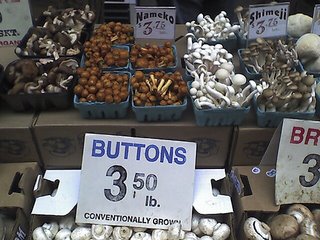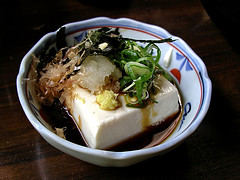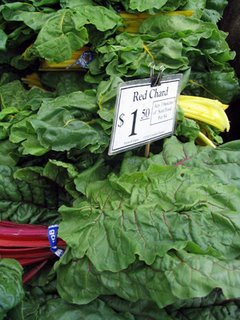 Mushrooms are often overlooked in today's daily diet but they are loaded with nutrition and amazing health benefits.
Mushrooms are often overlooked in today's daily diet but they are loaded with nutrition and amazing health benefits. One of the most nutritious mushrooms is the shiitake. (They are on the top left in the photo above). These mushrooms make great meat substitutes. You can eat them on their own sauteed with butter and garlic as a side dish or put them in stir fries and soups.
Shiitake mushrooms have been used medicinally by the Chinese for over 6,000 years. An eight ounce serving (at only 87 calories) will provide you with twenty percent of your daily recommended iron intake, and about ten percent each of Vitamin C, protein and fiber.
Shiitake mushrooms contain lentinan. Lentinan has amazing healing benefits. It boosts the immune system to fight infection or disease. It has been shown to be more effective than prescription drugs in fighting influenza and other viruses. It's also been shown to be effective at destroying cancer cells. And it lowers cholesterol levels in lab animals no matter what kinds of fats they are fed.
Nutrition is still a very young science and it was only just over a year ago that L-ergothioneine, an extremely powerful antioxidant, was discovered in mushrooms:
In research presented at the 2005 American Chemical Society meeting in Washington, D.C., an American research team revealed that mushrooms contain higher concentrations L-ergothioneine than either of the two dietary sources previously believed to contain the most: chicken liver and wheat germ.
Testing mushrooms consumed in the U.S., the team found that shiitake, oyster, king oyster and maitake mushrooms contain the highest amounts of ergothioneine, with up to 13 mg in a 3-ounce serving. This equals forty times as much as is found in wheat germ.
Of the most commonly consumed mushrooms, portabellas and criminis have the most L-ergothioneine, followed by white buttons. White buttons, the most popular of all mushrooms consumed in the U.S., contain up to 5 mg per three ounce serving-12 times as much as wheat germ and 4 times more than chicken liver. And more good news, L-ergothioneine is not destroyed when mushrooms are cooked.
So where to get them and how to cook them? You can find dried shiitake in most supermarkets these days. Before cooking, soak them for about half an hour. Then chop them and discard the stem as well as the tough middle part above the stem. I like to sautee them in butter and garlic and then add them to a steamed vegetable such as kale or swiss chard. They are also really good in miso soup.
Check out the just hungry blog for more info about dried mushrooms. The above photo is by Chika.
 Getting enough calcium helps us maintain strong bones and avoid osteoporosis. Over 20 million people in the US have osteoporosis.
Getting enough calcium helps us maintain strong bones and avoid osteoporosis. Over 20 million people in the US have osteoporosis.  This is the season for fresh corn. Eating corn on the cob is a great way to fill up on a delicious, nutritious and low calorie food. Corn is very high in fiber. A one cup serving (at 177 calories) will provide you with about 18% of the recommended daily value of fiber.
This is the season for fresh corn. Eating corn on the cob is a great way to fill up on a delicious, nutritious and low calorie food. Corn is very high in fiber. A one cup serving (at 177 calories) will provide you with about 18% of the recommended daily value of fiber.  One cup of cooked chard is only 35 calories. But the wealth of nutrition you can get from this one cup is quite incredible.
One cup of cooked chard is only 35 calories. But the wealth of nutrition you can get from this one cup is quite incredible.